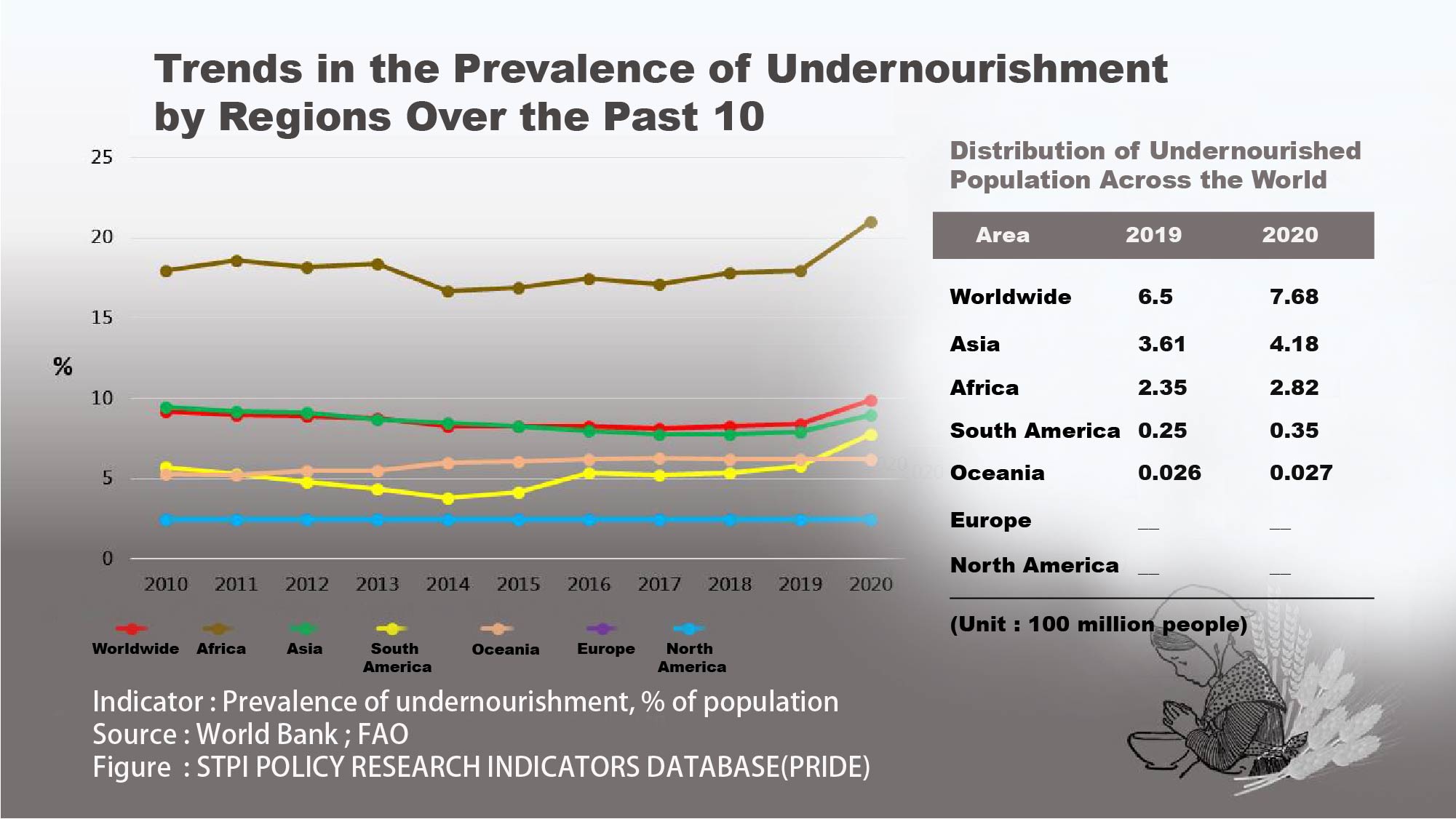
Achieving “Zero Hunger” is the second goal among the United Nation (UN)’s 17 Sustainable Development Goals (SDGs), and its first target (Goal 2.1) is to end hunger and ensure access by all people, in particular the poor and people in vulnerable situations, including infants and children, to safe, nutritious, and sufficient food all year round by 2030. To achieve this goal, the UN’s Food and Agriculture Organization defines hunger as equivalent to chronic undernourishment and measures levels of hunger across countries by the Prevalence of Undernourishment (PoU)—the proportion of population whose habitual food intake is insufficient to maintain their daily minimum dietary energy requirement.
According to the chart above, approximately 17% to 18% of the population in Africa were undernourished over the past decade. By 2020, the number had risen to 21%, indicating that one in every five people was undernourished, making Africa the continent with the world's biggest population of people suffering from hunger. Asia came second globally with a PoU of 9% in 2020, up 1.1% from 2019. The global average PoU also grew by 1.5% between 2019 and 2020, from 8.4% to 9.9%. Meanwhile, the PoU in Europe and North America were below 2.5%.
In terms of population, 768 million people worldwide were undernourished in 2020, up 118 million from 650 million in 2019. In 2020, 54.4% (418 million people) of the world's undernourished people resided in Asia, with India, Pakistan, Indonesia, Bangladesh, and North Korea having the largest population who suffered from hunger; another 36.7% (282 million people) of undernourished people lived in Africa, with the Democratic Republic of the Congo, Nigeria, Ethiopia, Tanzania, and Kenya observing the highest hungry levels.
The chart above also shows that hundreds of millions of people in all corners of the world are still going hungry after all these years—a situation hardly imaginable for people living in Taiwan. Facing the fallout of the global COVID-19 pandemic, the number of undernourished people continued to climb in 2020, adding to the uncertainties and challenges of reaching SDG 2, which is to end hunger by 2030.
Related
- News 2019 Win the PRIDE: High School Students Won Award by Analyzing Offshore Wind Potential in Taiwan
- News Global AI Index 2020
- News Life Made Different with MRT
- News Heavy Metal Lead – A Cause of Serious Health Problems
- News How “Free” is Taiwan’s Economy?
- News Pork and Beef Production in Perspective
- News Our Relationship with Financial Cards
- News I Need A Job
- News Sustainable Development Goals
- News Venture Capital Supports Startups
- News Who is the King of Voyage?
- News Migrating Across Thousands of Miles
- News Investment Incentive Policies
- News The Competitiveness of Taiwan
- News Paradise for Immigrants
- News Smart City
- News Sunrise vs Sunset
- News The Battle between the Railway Duo
- News Clean Cooking
- News How are Science Parks Faring in This Economy?
- News Booming Auto Sales
- News Airports Under the Tyranny of COVID-19
- News Gaining the Upper Hand Over the Pandemic
- News Making Ends Meet Isn't Enough Anymore
- News Democracy
- News Save Our Planet
- News Women's Disposable Income Worldwide
- News Connecting Everyone on the Internet
- News The Inheritance of Men and Women: A Wealth of Difference
- News From Small Steps to Great Wealth
- News Family Life During the Pandemic
- News Exploring the Journey of Trade
